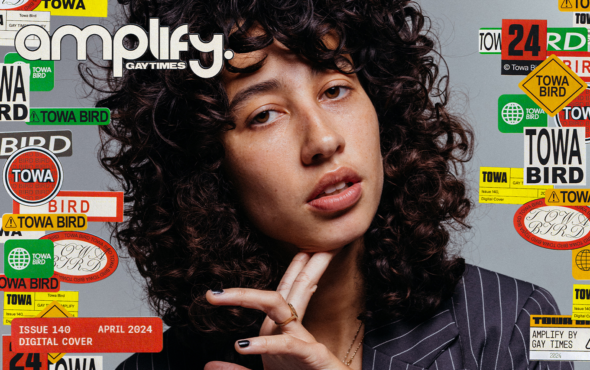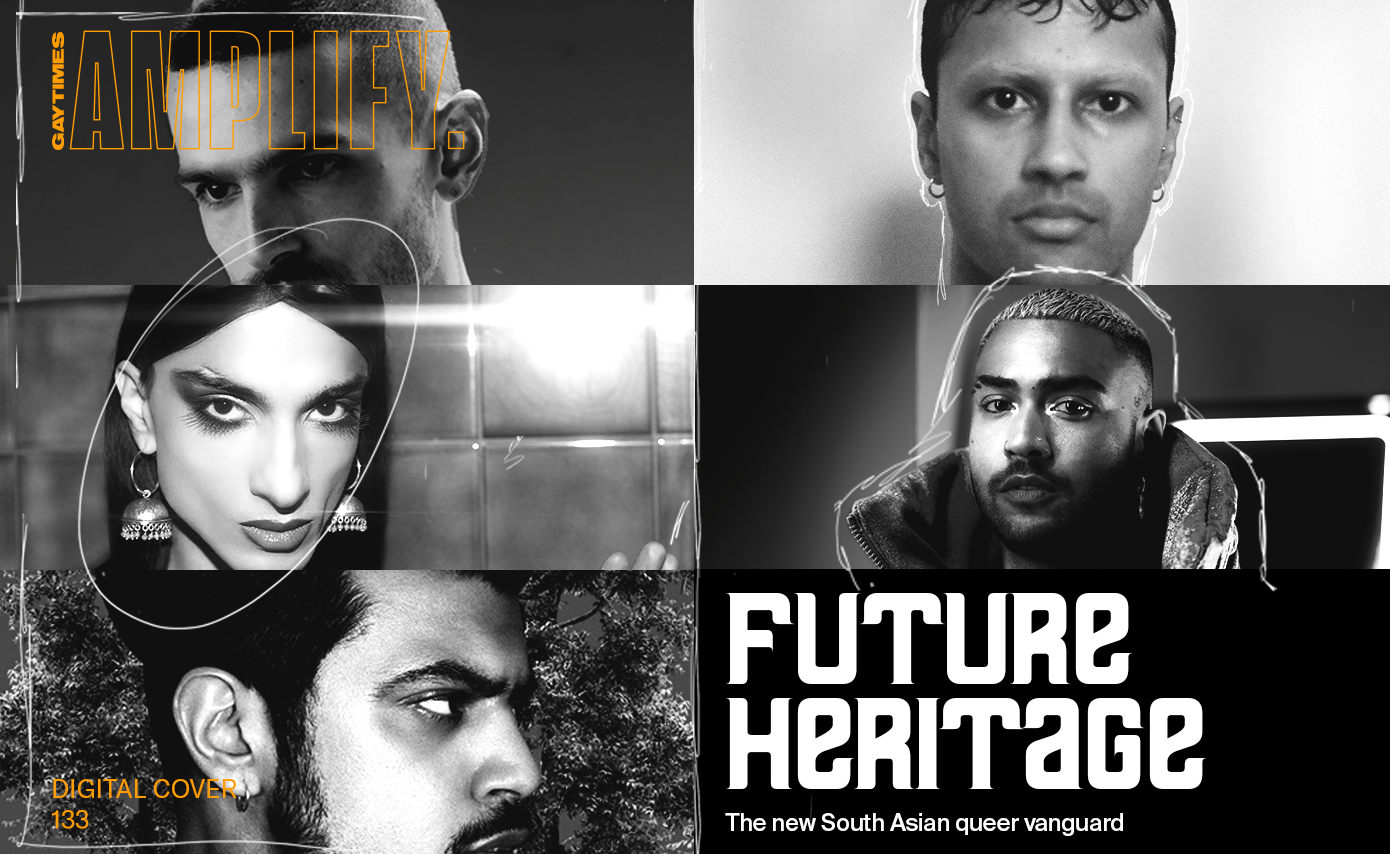
South Asian queerness is a defiant celebration of who we are. It’s a combination of unapologetic self-expression and joyous representation. Here, in the UK, the LGBTQIA+ scene has been boldly shaped by a large minority of South Asian voices. One of these most notable influences has been presenter and producer Ryan Lanji. A mainstay in the London queer scene, Lanji is also the founder of the thriving South Asian LGBTQIA+ hub HUNAGAMA, which loosely translates to ‘chaos’ or ‘uproar’ in Hindi. The collective’s mission is to champion queer alternative South Asian music, film, art and culture. Together, Lanji and HUNGAMA are working tirelessly to change what queerness can look like in London.
Like many South Asian creatives, identity-based stereotypes and preconceptions have followed HUNGAMA into their careers. For Lanji, the drive has been to rewrite the rules of representation and to give back to the queer South Asian diaspora. Putting his intentions into practice, the DJ selected a handful of rising names breaking down barriers in today’s industry.
For his cover story, Lanji spotlights Ray Laurèl and Shivum Sharma, mixed media artist Aadam Sheikh, and creative consultant Emman Debattista to discuss how they’re reimagining South Asian queer culture.
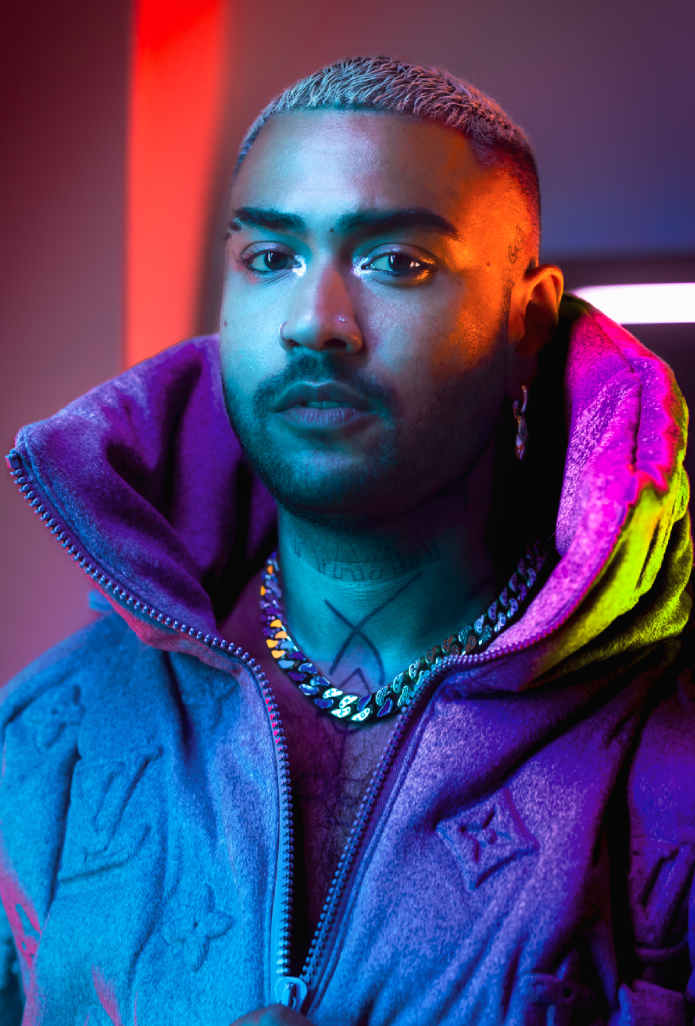
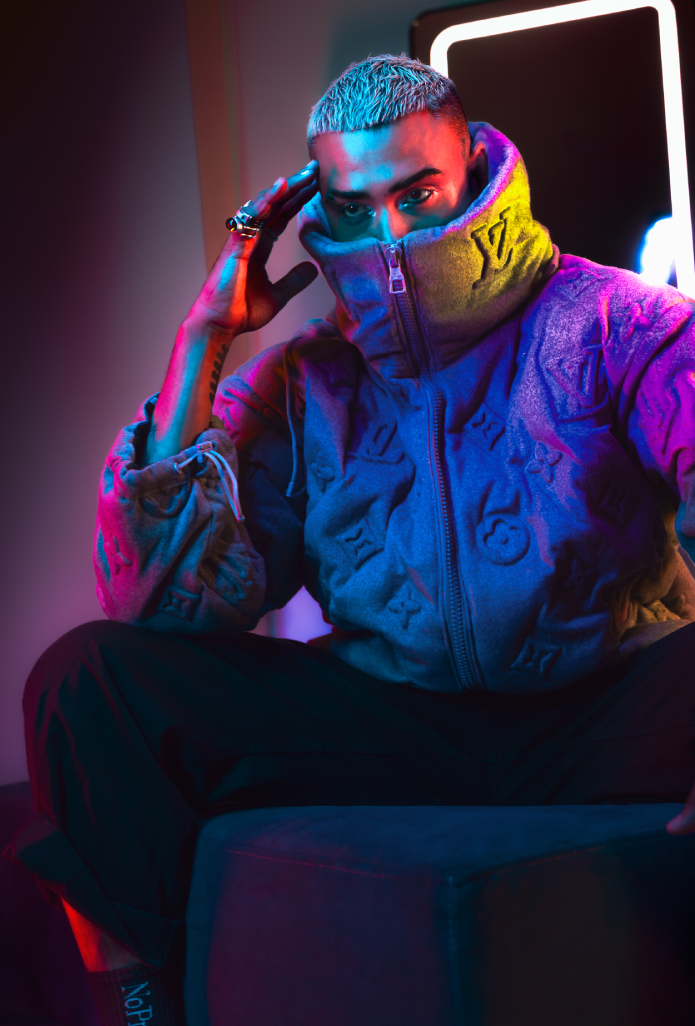
Ryan Lanji
Ryan Lanji’s ambition to create something different stemmed from his feelings of alienation in white-dominated LGBTQIA+ spaces. Then, soon enough, HUNGAMA was born in 2017; a grassroots queer Bollywood “spectacle” taking place in East London. His collective is an amalgamation of style and creativity, bringing together collective identities: British Asian, LGBTQIA+ and South Asian.
HUNGAMA’s innovation has been widely embraced, particularly its queering of club culture and representation. In creating this unique, thriving space, Lanji has continued to mentor young South Asian LGBTQIA+ talent to enrich London’s growing queer scene.
What is the biggest challenge South Asian queer creatives face in receiving new opportunities?
The biggest struggle for South Asian queer talent is the lack of good opportunities and being taken seriously – they’re working with limited resources and having to perform to the level of pop stars. Brands, and those looking to work with South Asian talent, have a responsibility to support creatives when they’re first starting out.
How have you created underground change?
I work with South Asians on the camera crew when I have an event as well as 3D designers or graphic designers. I’m proud to say that I’ve always given young people with a lot of talent opportunities that were bigger than where they were in their careers.
How is the new generation of South Asian LGBTQIA+ representation different?
The new generation are more clued in and less likely to put themselves in a box. They are nuanced and experimental and have managed to congregate and accelerate one another. I’ve been taken aback and it’s really cool because it’s so easy for us to be reductive about people based on their looks or their identity. The younger ones are aware of their potential and are dreaming of it.

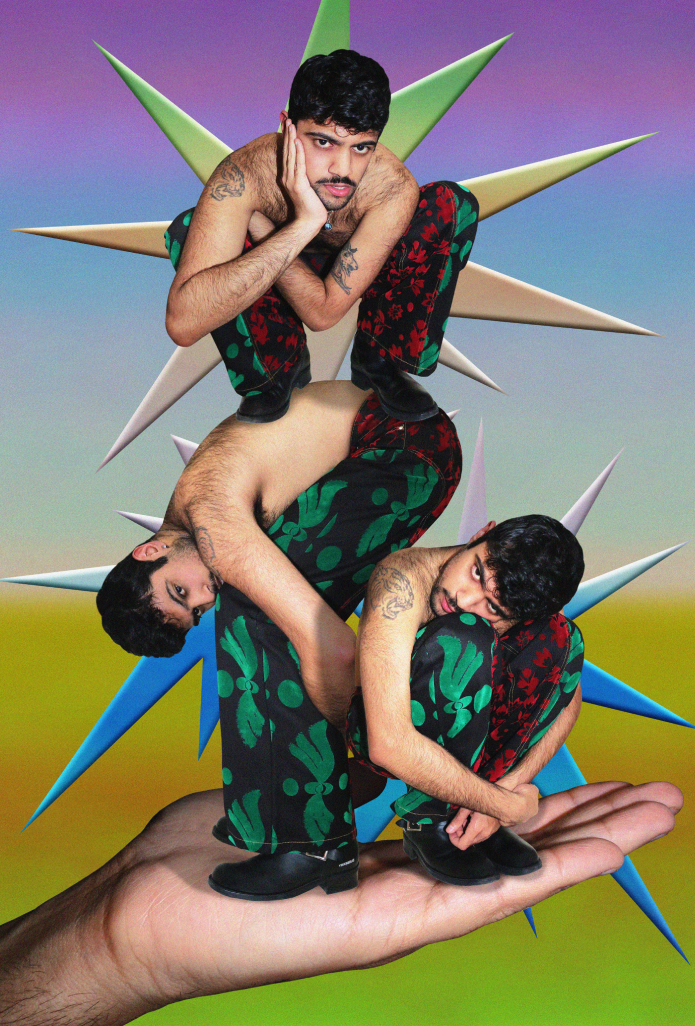
As part of his selection, Lanji has highlighted four South Asian LGBTQIA+ creatives expanding how queerness is portrayed in the UK. From upcoming musicians to new names in fashion and art, these artists are re-establishing the various ways South Asian identity can be platformed and honoured.
Aadam Sheikh
Aadam Sheikh is a London-based creative working in art direction with a focus on fashion and branding.
How are you creating change in the UK countercultural creative scene?
The change I’m trying to bring is the migration to simply being, and not always having to fight for opportunities. Within any marginalised community, everybody is always suffering and talks about it costing an arm and a leg to get here. I don’t want everyone to feel that struggle or be in pain to feel recognised.
Now, there is this new Renaissance of South Asian representation where we push our power, rather than how hard we’ve fought to be here. We shouldn’t have to fight to be in your space.
Can you name a piece of work that you’re particularly proud of?
My body has been fetishized, being Brown and being hairy. I’m lucky a lot of people have embraced it in the media, pushing bodies like mine to be normalised rather than sexualised. I did a shoot where I was put in a weird crochet thong and I thought it was [drawing on] this fetishization, but it was really powerful. I’ve learned that anything with me pushing my body out there was a lot more empowering than I thought.
It’s this overall power of not only what I was doing creatively, but also my literal, physical self being accepted.
What’s next for South Asian countercultural creatives like yourself?
This uprising of South Asian culture has been amazing to see across all genres, but still, it’s becoming like wider creative culture. There aren’t these divisions of, for example, class. We are being seen everywhere, but it’s just one type of us.
It’s amazing to have that South Asian representation, but let’s help each other out! Let’s not stop here. There are so many new perceptions of our culture being built, by so many people. Let’s continue redefining what we do.
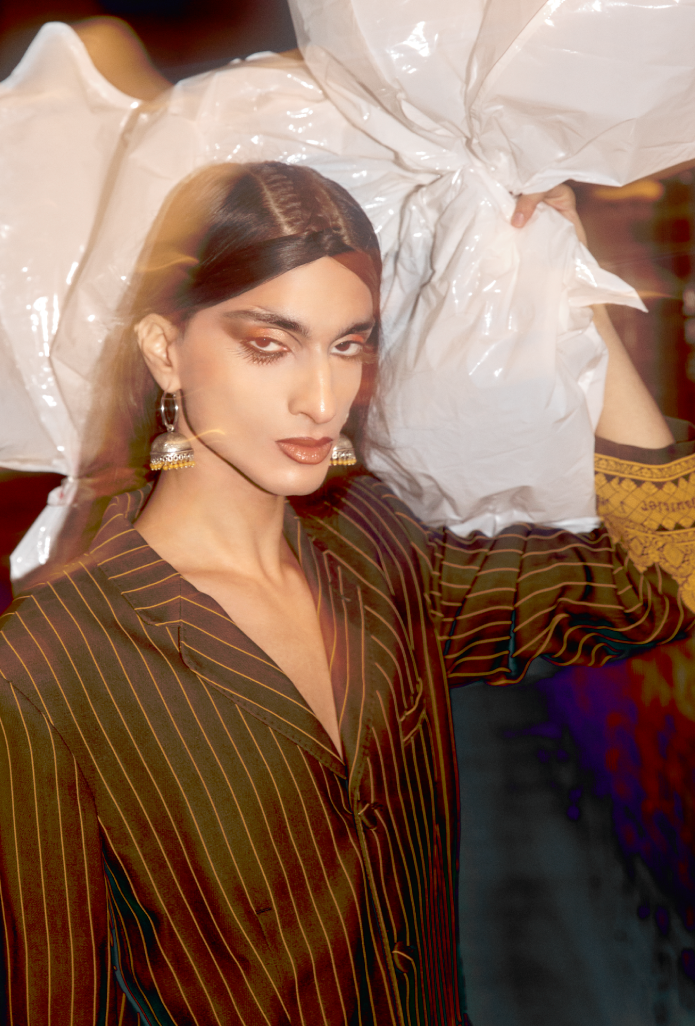
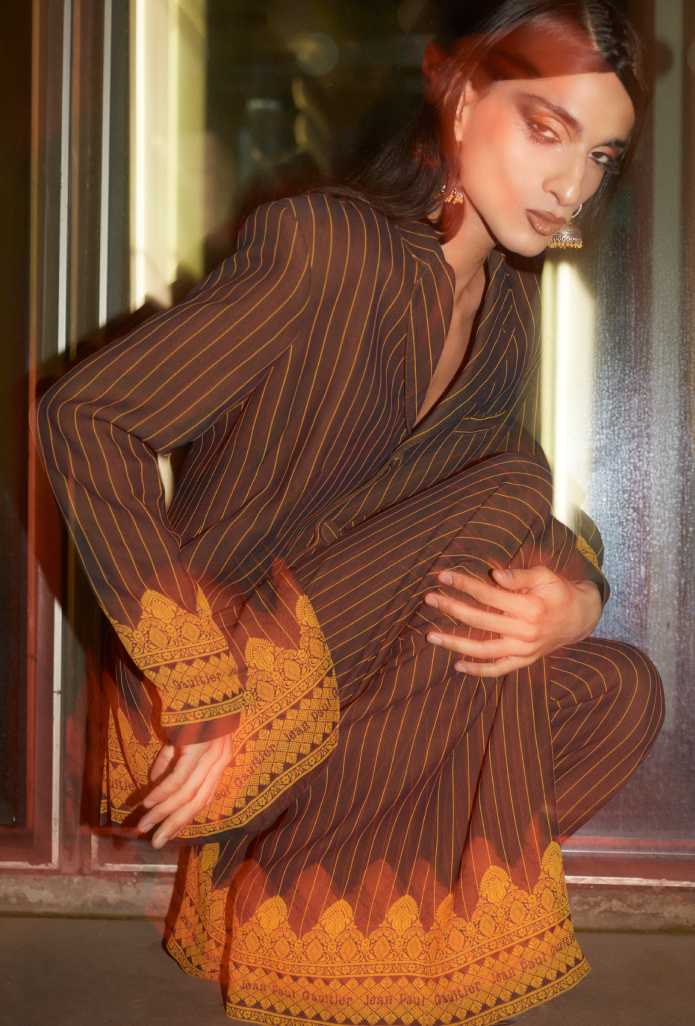
Emman Debattista
Emman Debattista is a creative consultant based between London, Paris, Berlin and Milan.
How have you used your heritage to shape the work you do in the LGBTQIA+ community?
I used to get anxious answering this question – I’m a double diaspora! I’m of mixed ethnicity
and was born and raised in Australia, however, I’ve been a Londoner for the last ten years. My mother is Indo-Fijian, a descendant of ethnically South Asian people living in Fiji who were brought by the British from India in the 1800s to work on farms in Fiji and parts of Africa, South America and the Caribbean. Many people, including South Asians, aren’t always educated on this history, so I have often felt like an outsider both in Australia and some South Asian spaces.
My relocation to London was a vital part of learning more about my cultural heritage. I’ve also had the wonderful experience of connecting with other South Asian diasporas from places like Trinidad, Guyana and Jamaica with the same population percentage of South Asians and many cultural similarities with Indo-Fijians.
Which challenges did you face when first trying to get your work out there?
Being ghosted at the beginning of my career certainly affected my confidence in dealing with rejection, but I used this as motivation to keep moving forward. It’s important to remember in slow periods that there is always someone out there who will believe in you, reply, book you that job, and give you your big break. Never take no for an answer!
Inclusion and diversity have improved over the last ten years, with a stronger sense of community. Social media has been a game changer in being able to directly network and connect with people. I would not be where I am today if it wasn’t for the amazing South Asian creatives who opened doors and believed in me.


Ray Laurèl
Ray Laurèl is a London-based musician and producer known for his genre-blending pop.
What advice do you have for South Asian LGBTQIA+ creatives looking to shake up the creative scene?
I read something a year ago which said that the best way to help anybody is by being your best, authentic self. Although that word is getting overused now, it’s true. When everything else seems not quite right, all I can do is be honest and personal. Maybe too personal at times, but I like that. I like making people uncomfortable sometimes.
We’re in an age where a fan halfway across the world can message you and that is joyful to me. Being able to see paragraphs on how [my music] has helped people’s relationships or discussing their relationship with LGBTQIA+ identity. It’s a lot of responsibility but I hold that space for them all. They couldn’t say it to friends or family, but they could say it to me just because of a song.
How has your identity as an LGBTQIA+ South Asian shaped the music you create?
From the Indian side, Bollywood was the only string I had attached to my roots. I’ve been quite alienated from my culture. I used to call myself a coconut – white on the inside, Brown on the outside – but Bollywood dancing was my first step into performing. There’s something quite beautiful but tongue-in-cheek about that.
Coming from Harrow, there wasn’t really anything in terms of a music scene. That’s been quite fun. Music is changing, which is exciting to see, but because there is so little representation, it makes it easier for me. I get to turn to anything; it’s a free for all.
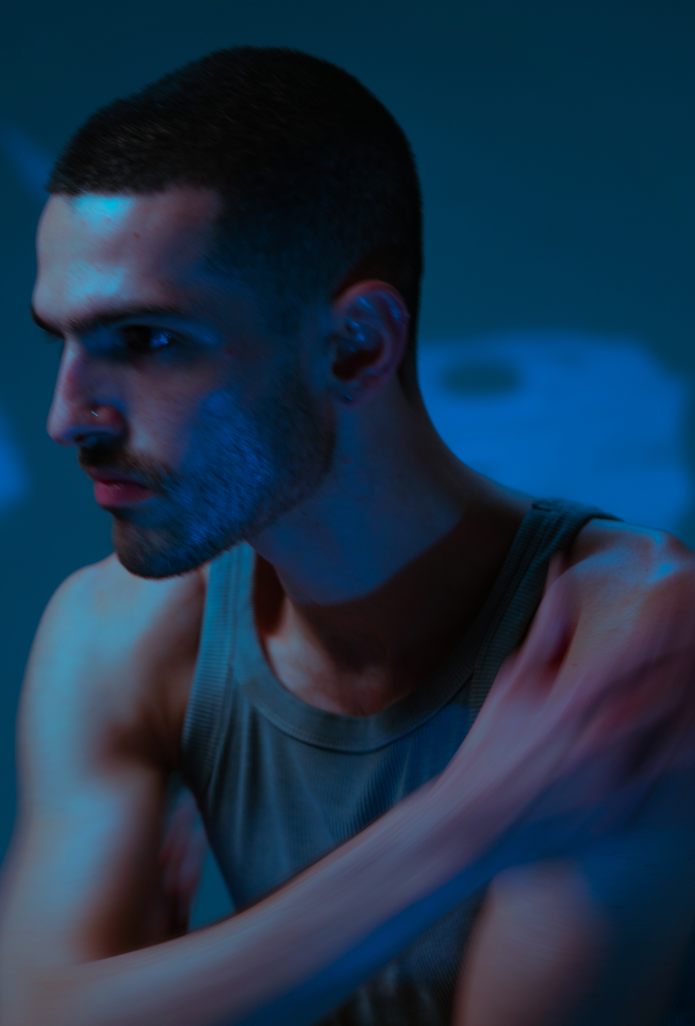
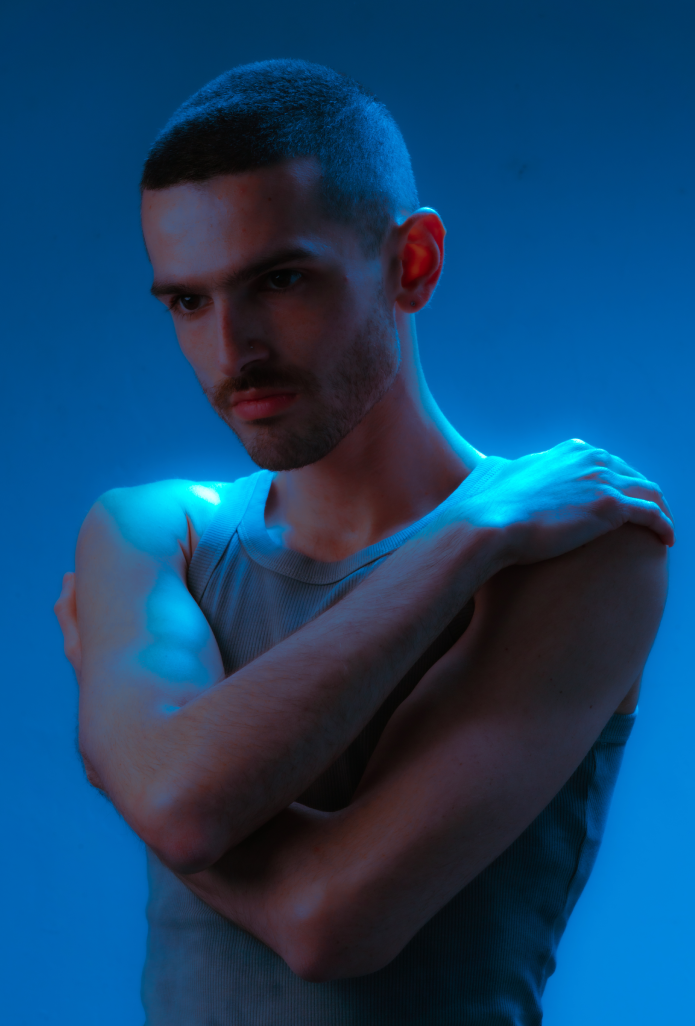
Shivum Sharma
Shivum Sharma is an alternative singer-songwriter known for his high-energy LGBTQIA+ DJ club nights and pop music.
How have you found queer joy in your career so far?
I find a lot of joy and gratitude in hearing other people say that they’ve connected to my work. It helps them indulge, face and accept their emotions.
I recently went to New York and met up with some amazing queer creatives who’d not met before. We all have each other and look out for each other. To have people on that side of the world say how much they connected to my music and how much it made them feel and inspired them creatively makes me feel so grateful and is a huge source of motivation to continue. It’s a huge sign that I’m doing the right thing.
Which South Asian changemakers do you look up to?
One of the first Asian people that I saw making a huge mark was Reeta Loi who should be celebrated for the amazing work they’ve done.
What changes in representation have you seen since you started your career?
I’ve noticed since I’ve been making art and putting myself out there how much more queer South Asian representation there is now. Artists are getting younger and younger, as well, which is just incredible to see. Hopefully, that’s the knock-on effect of there being representation: maybe they don’t even have to go through that stage of feeling like there’s something to hide or something to repress.
What advice would you give to South Asian creatives struggling to break into the countercultural scene?
My advice would be to Indulge in the things that make you different. Find your crew, because there will definitely be one out there for you. You feed off each other and people work in so many different arts. [Having] a great, strong, creative network around you has been endlessly useful and inspiring for me, and there are so many.

